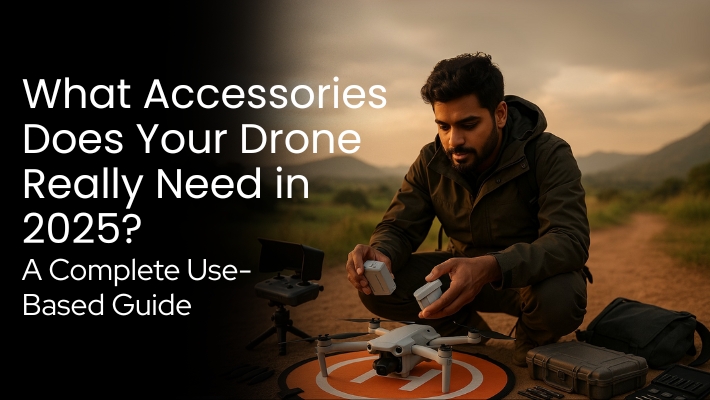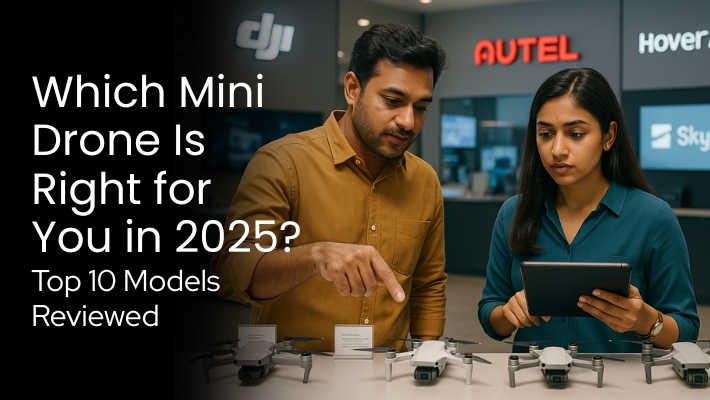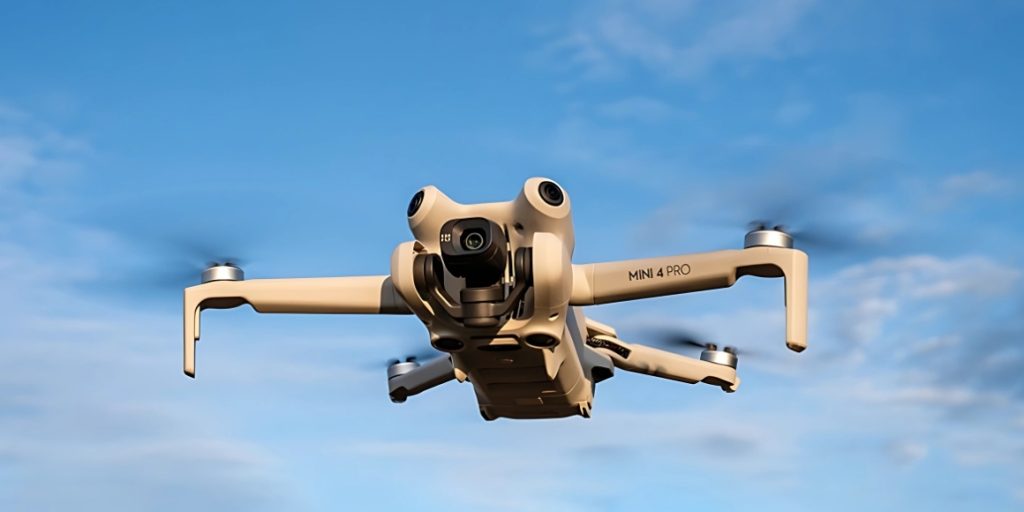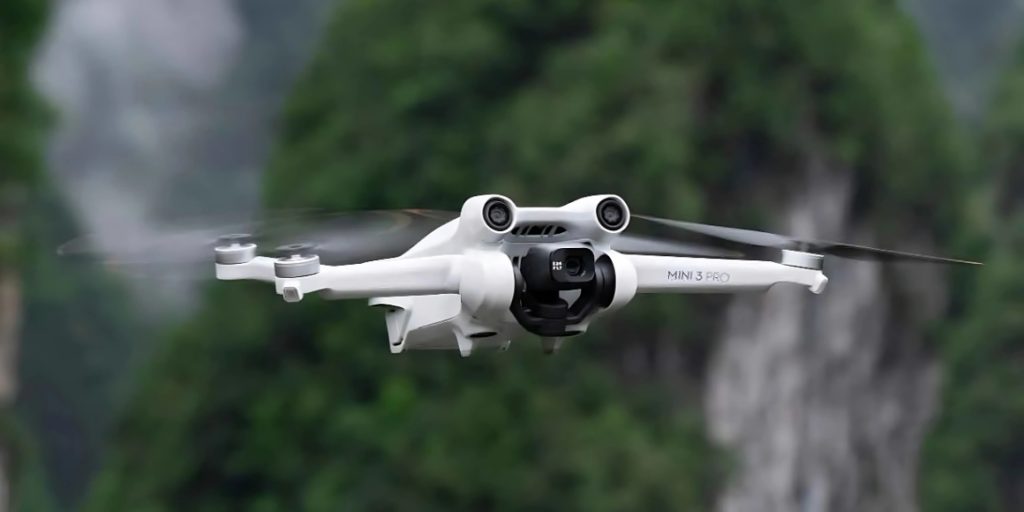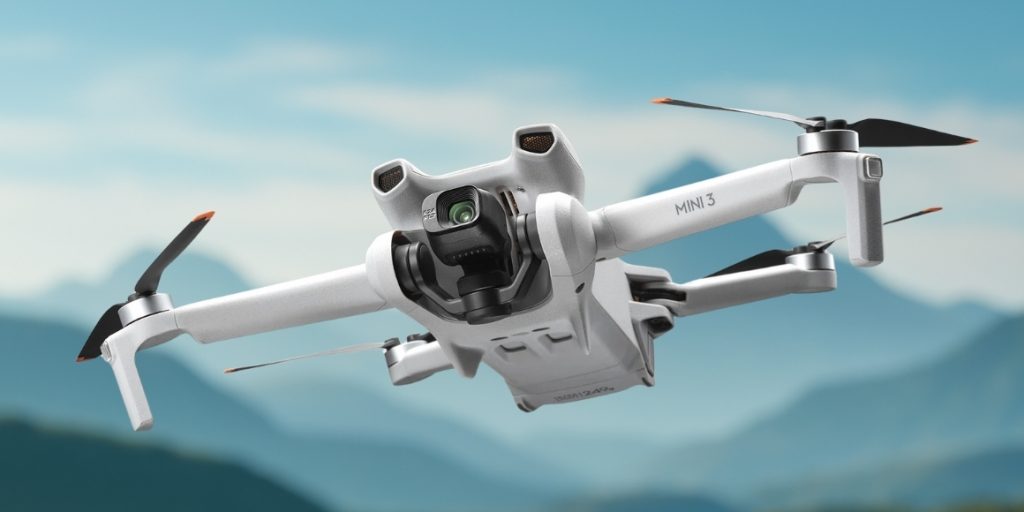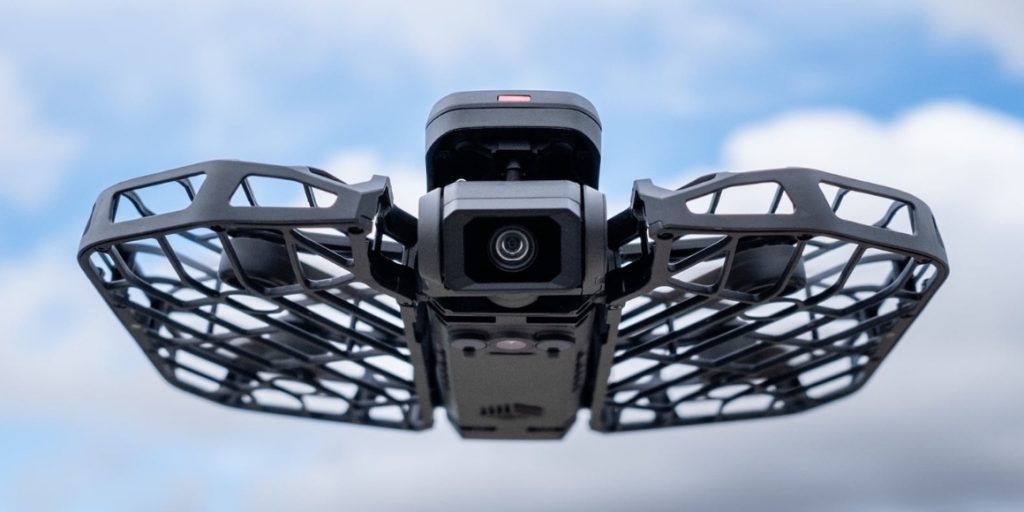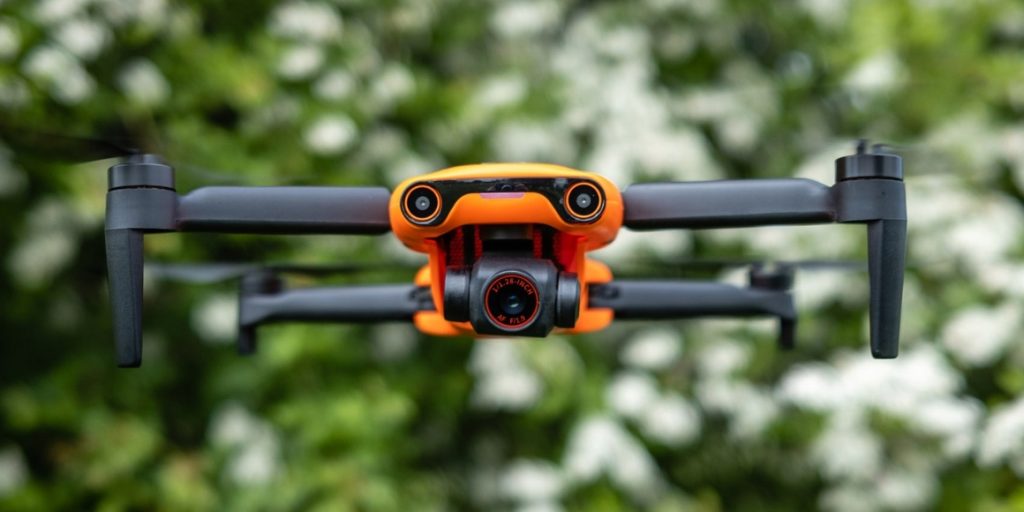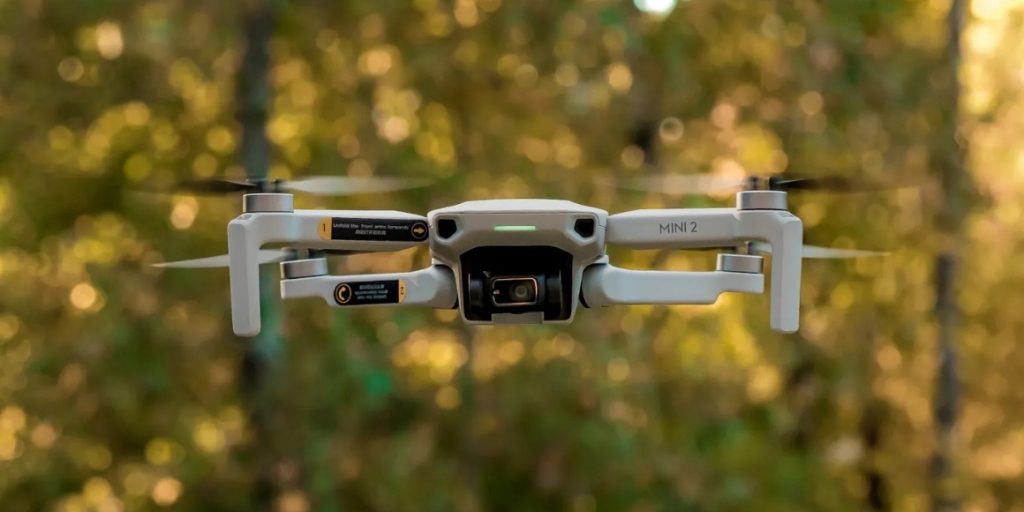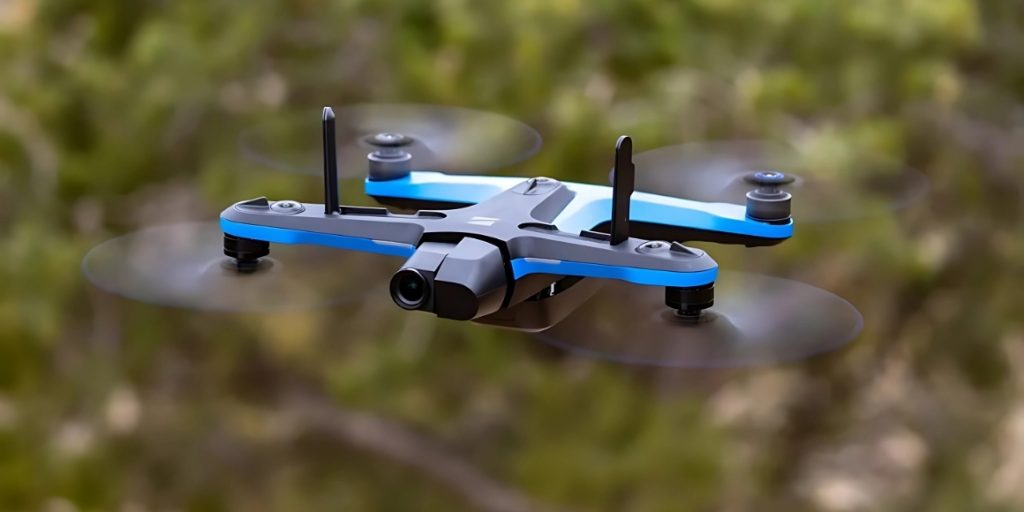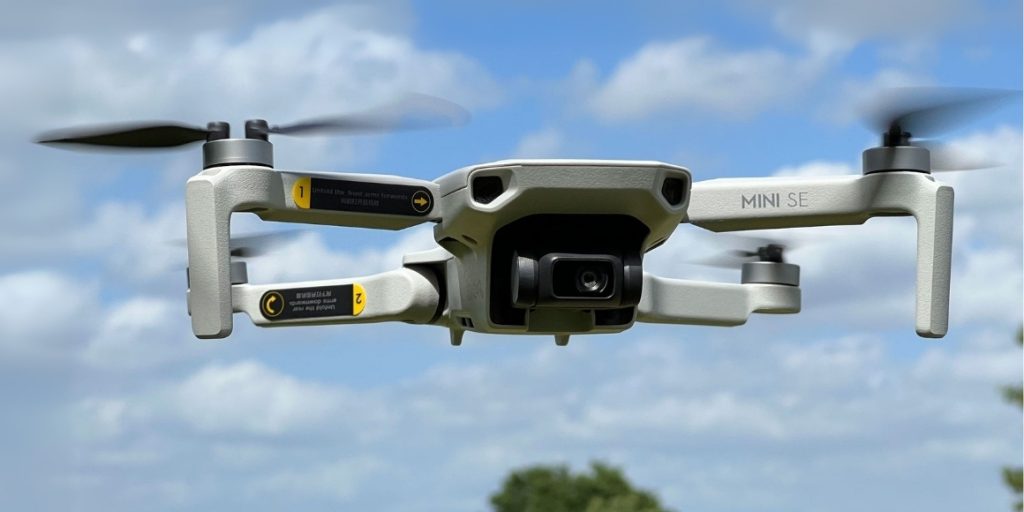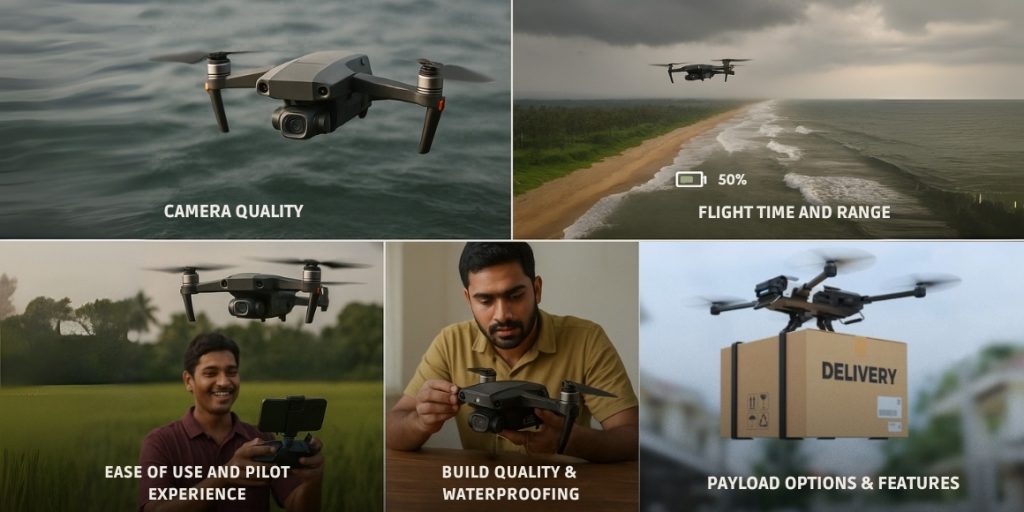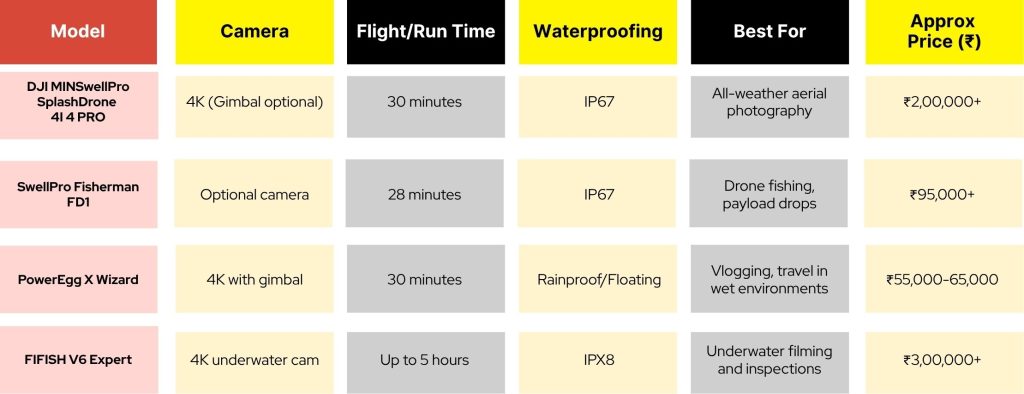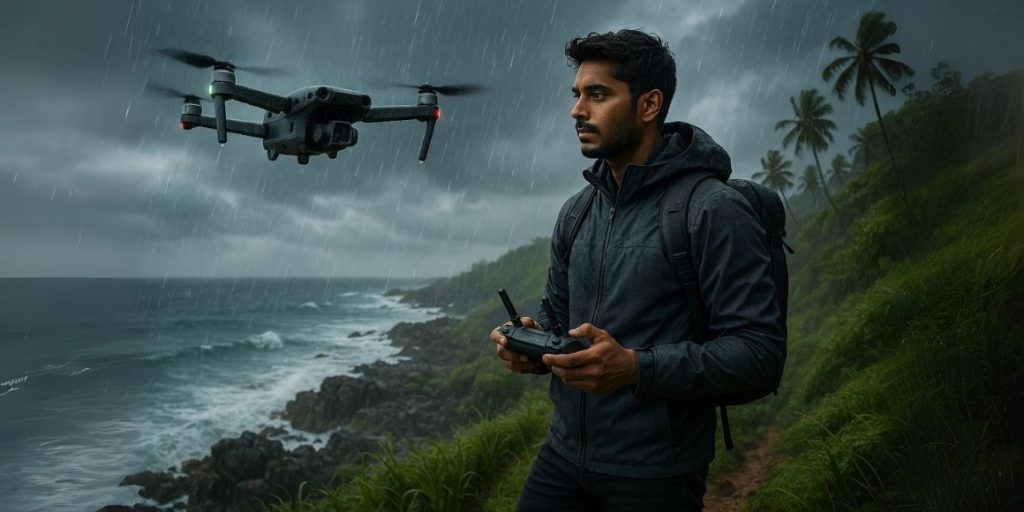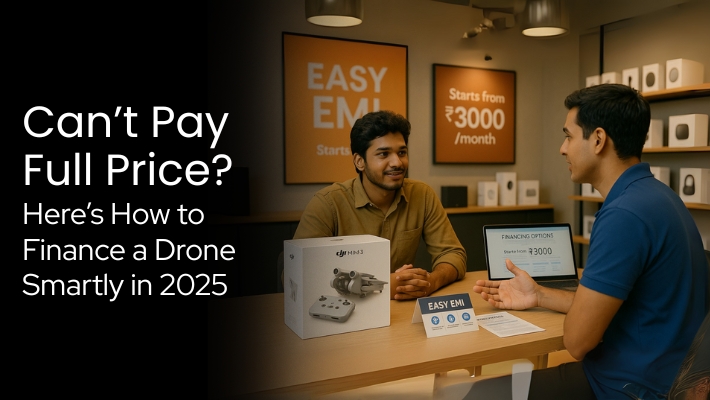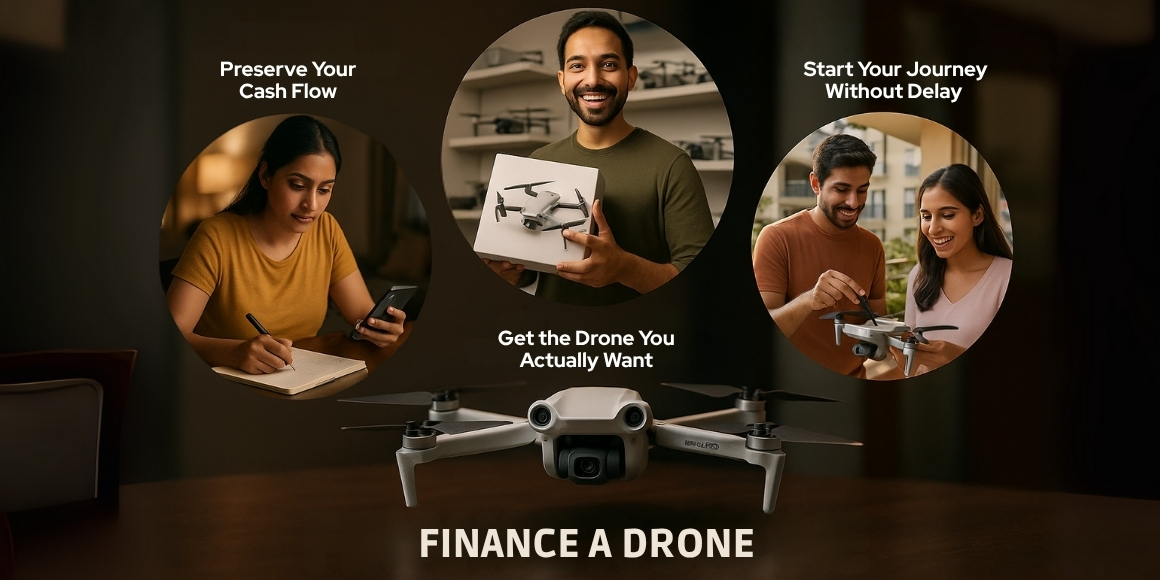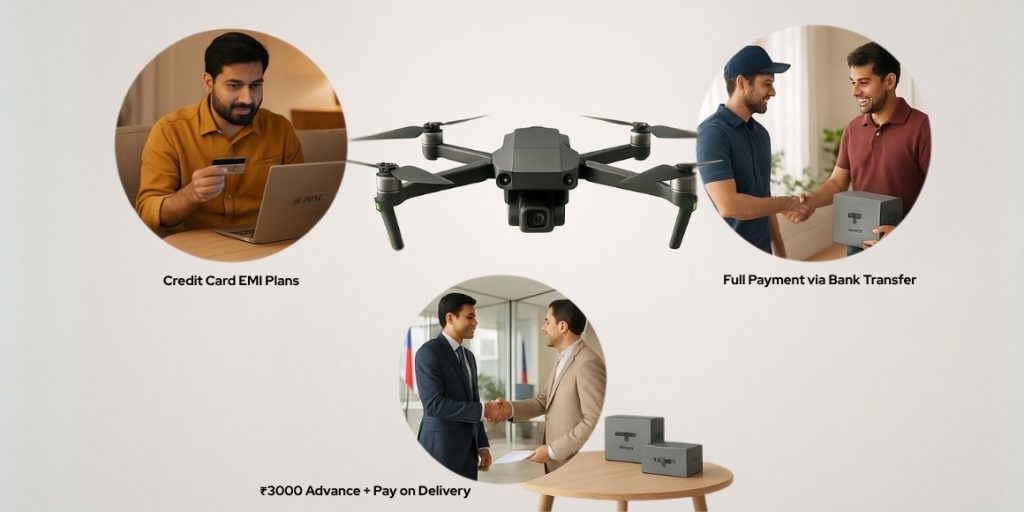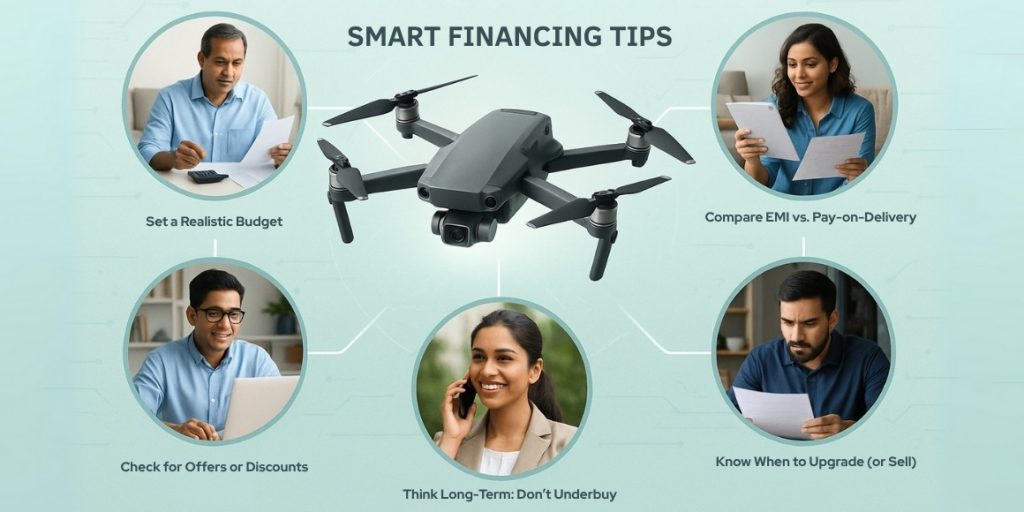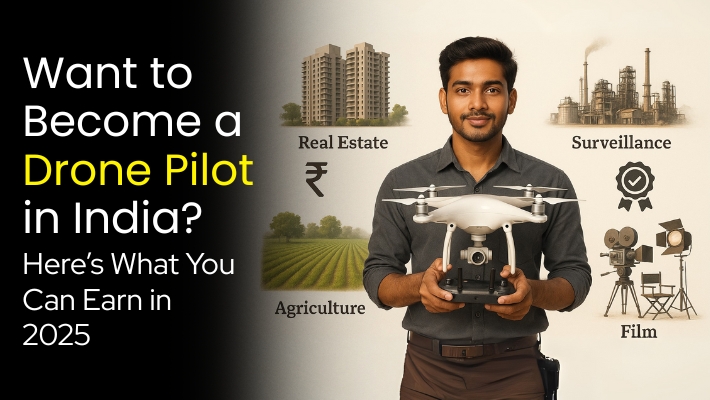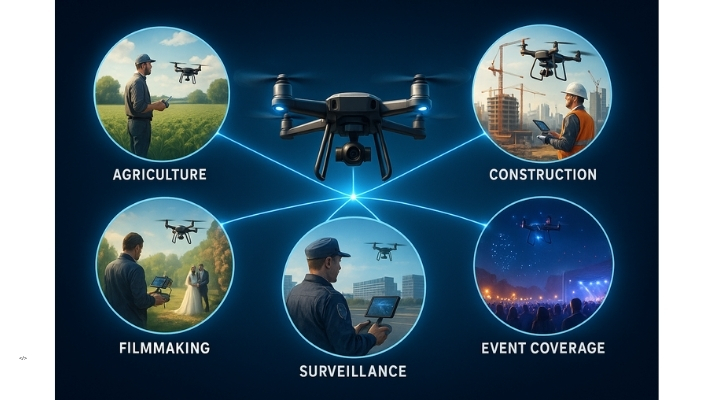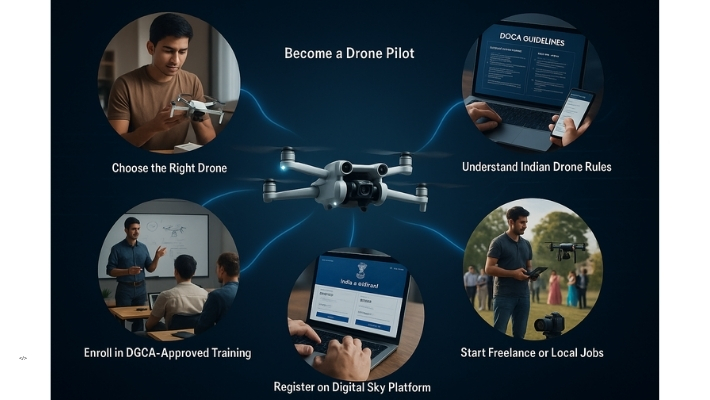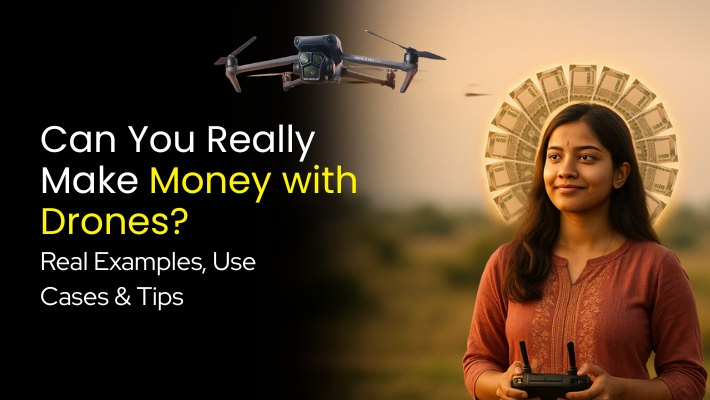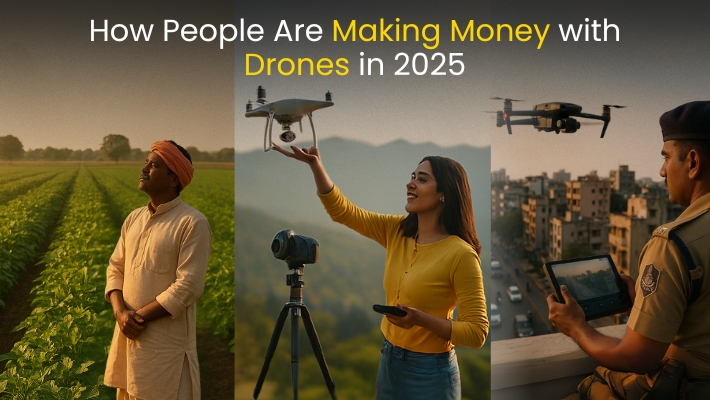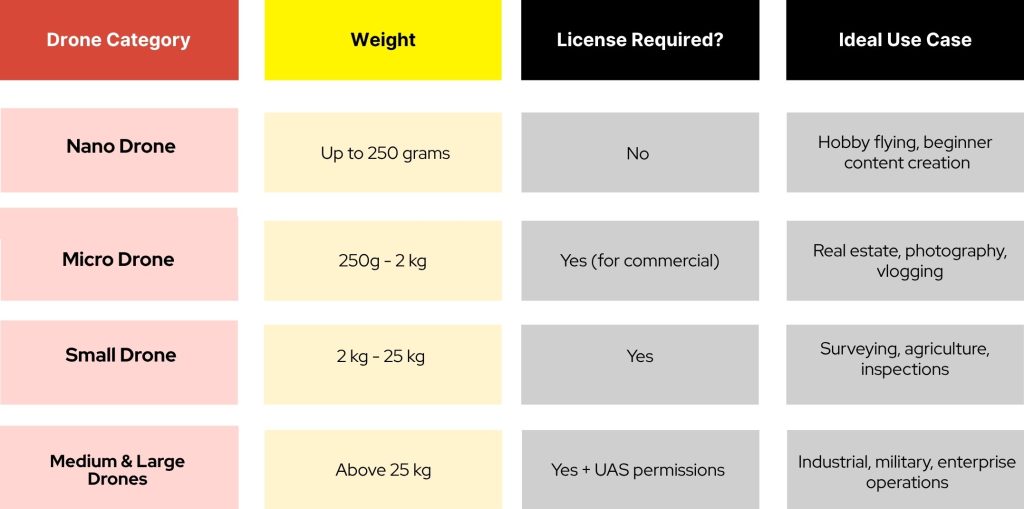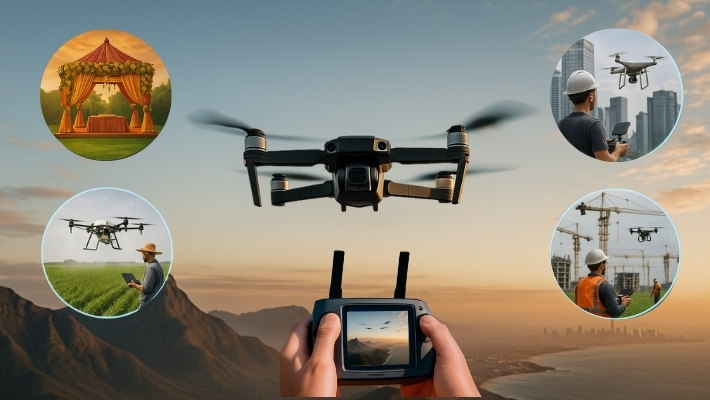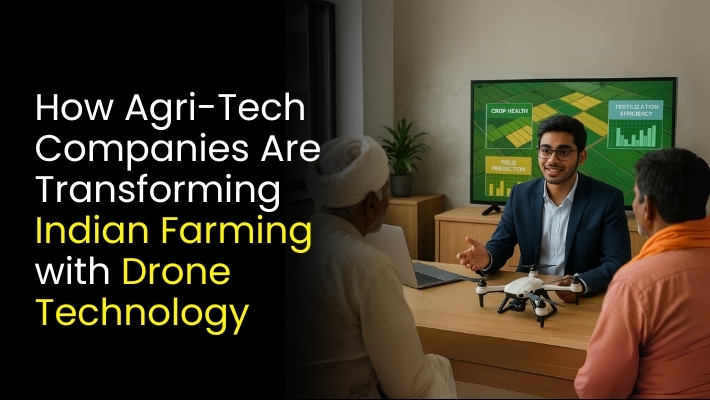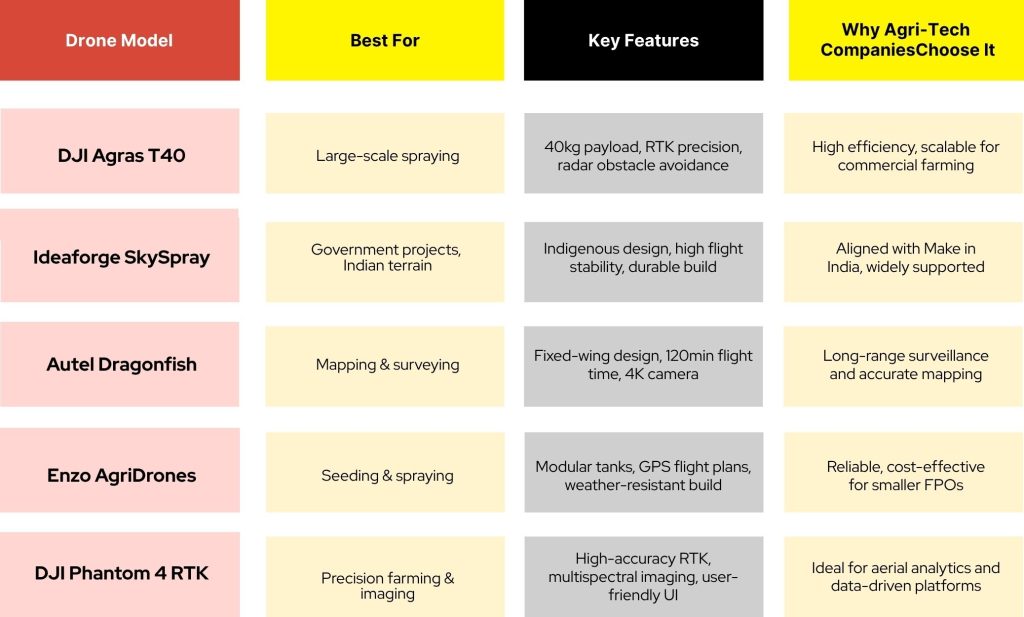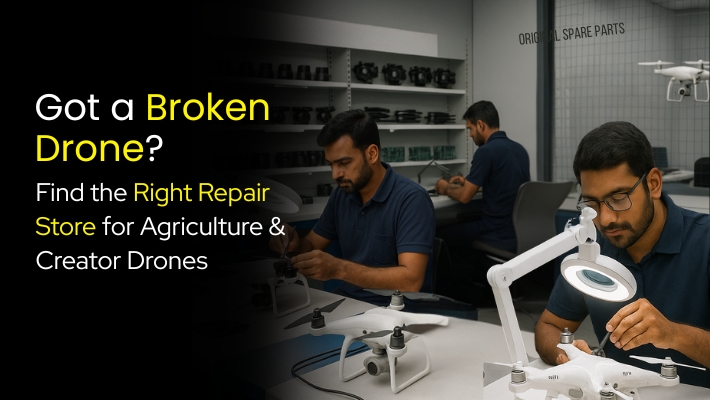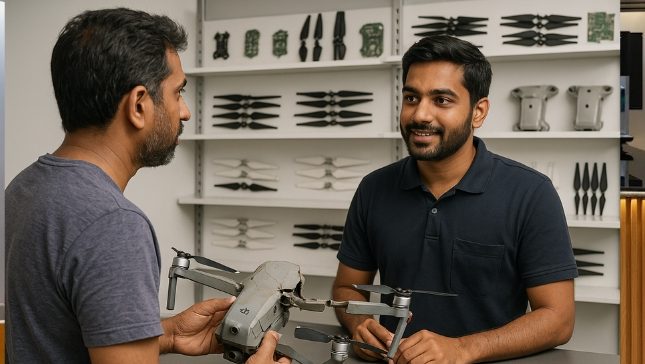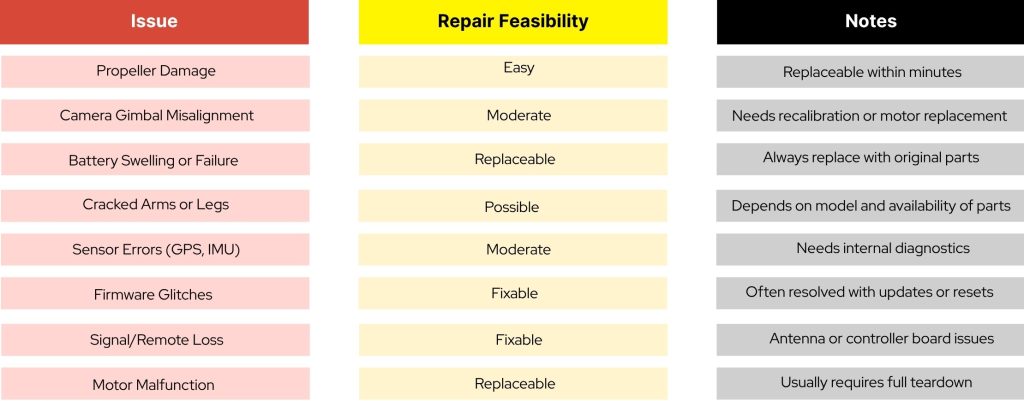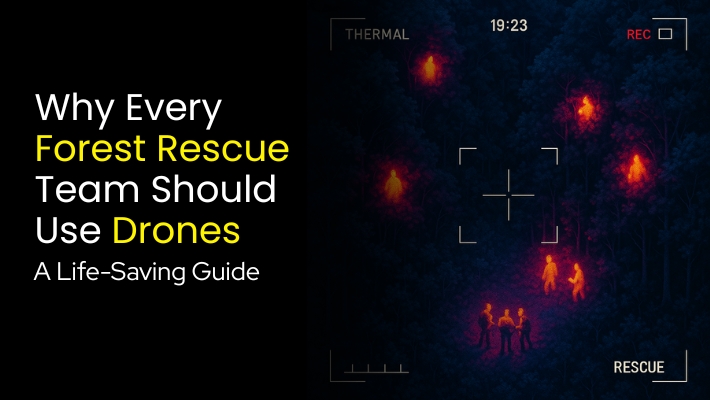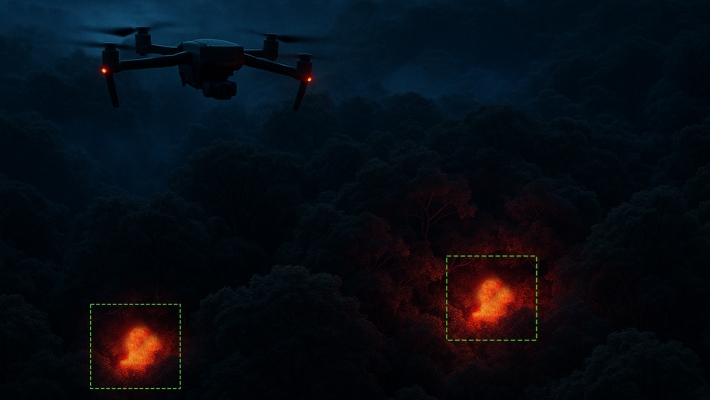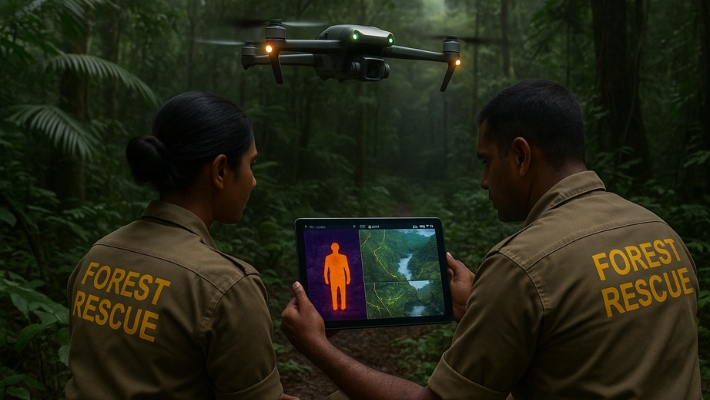What Accessories Does Your Drone Really Need in 2025? A Complete Use-Based Guide
In 2025, buying a drone is just the start. Whether you’re flying for fun, filming content, or managing work in agriculture or construction, the accessories you use can make all the difference. From safer flights to better footage and longer sessions in the air, the right gear turns a basic drone into a dependable tool.
As drone use grows across India, more flyers are learning that accessories aren’t just add-ons — they’re essential. Whether it’s ND filters for smooth video, a spare battery to extend your shoot, or a landing pad that protects your drone in dusty fields, each accessory has a clear job to do.
But the best part? You don’t need to guess. In this guide, we’ve broken down the most useful accessories based on how you fly — whether you’re a creator, a traveler, a farmer, or someone working in industrial inspection.
And if you’re wondering where to find all this gear, Jetayu Gadgets offers a wide range of accessories for DJI, Autel, Skydio, HoverAir, and more. Whether you’re looking to buy a drone for the first time, improve your flying workflow, or avoid damaging your drone during landing, this guide will help you choose the right tools for your goals.
Why Drone Accessories Matter More Than Ever in 2025
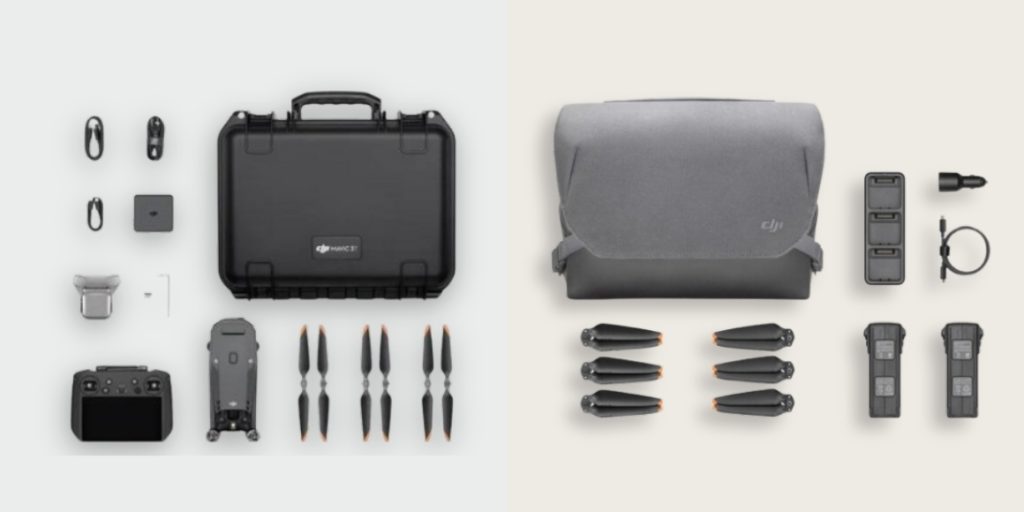
As drones continue to evolve, so does the way people use them. In 2025, accessories are no longer optional extras — they’re part of a smart setup that helps you fly safer, shoot better, and get more done with every flight.
Here’s why they matter:
1. Drones Are Used for More Than Just Flying
Today, drones are doing serious work. From vlogging in remote locations to agriculture mapping and construction surveys, each use case demands specific support gear. The right accessories ensure better results and reduce the risk of errors during flight.
2. Indian Weather and Terrain Demand Better Protection
Flying in India means dealing with dust, heat, wind, and humidity. A simple accessory like a landing pad or gimbal cover can protect your drone’s most sensitive parts and help you fly more confidently.
3. Battery Life Is Still a Limitation
Even in 2025, battery life is one of the most limiting factors in drone flying. Carrying extra intelligent flight batteries or a multi-battery charging hub allows you to shoot for longer without worrying about downtime.
4. Smarter Flights Require Better Control
As drones get smarter, accessories like ND filters, propeller guards, and signal boosters help you make the most of those features. Want to capture better cinematic shots? Filters help. Flying near trees or buildings? Guards protect your propellers.
5. Accessories Help You Fly Within the Rules
In India, drone regulations consider things like visibility and safety. Accessories such as LED lights, return-to-home beacons, and wind-resistant bags help you stay compliant and visible in varied flying conditions.
Must Have Drone Accessories for All Drone Owners
No matter what drone you fly or why you fly it, a few accessories are always worth investing in. These essentials improve your flying experience, protect your equipment, and help you get the most out of every session.
1. Extra Batteries
Drone batteries usually last between 20 to 45 minutes. For creators, surveyors, or even hobbyists, that is rarely enough. Having at least one or two spare batteries lets you keep flying without waiting for a recharge.
Best for: All drone users
Tip: Always use brand approved batteries to avoid damage or warranty issues
2. ND Filters
Neutral density filters help control exposure in bright sunlight. If you’re filming outdoors during the day, ND filters allow you to capture smoother, cinematic footage without overexposing your shots.
Best for: Content creators, vloggers, landscape videographers
Related topic: ND filters help beginners create better videos in changing light
3. Propeller Guards
These simple attachments protect your propellers from damage during takeoff, landing, or close quarters flying. They are especially helpful for indoor use or flights in tight areas like construction sites or forest trails.
Best for: Beginners, indoor flyers, mapping and inspection
Tip: Use guards during training or risky environments to avoid early repairs
4. Carrying Case
A well built case protects your drone and gear while traveling. Whether you’re shooting in the mountains or commuting across the city, a shockproof and waterproof case is worth every rupee.
Best for: Travelers, creators, and professional flyers
Related topic: Waterproof storage is key for drone travel in India
5. Memory Cards
Always use high speed microSD cards that match your drone’s video resolution. Slow or low quality cards may lead to skipped frames or corrupted footage.
Best for: All drone pilots
Tip: Keep at least two cards handy during shoots to avoid full storage issues
6. Charging Hub
A charging hub allows you to charge multiple batteries one after another without manual swaps. It is a must for users who fly daily or travel with their drones.
Best for: Frequent flyers, professionals, survey teams
Related topic: A multi battery charging hub saves time and keeps you ready for back to back flights
7. Landing Pad
A foldable landing pad gives your drone a clean, stable surface to take off and land. It protects your camera and gimbal from dust, mud, or small rocks — especially on uneven ground.
Best for: Outdoor flyers, agriculture users, adventure vloggers
Tip: Use a brightly colored pad for visibility in low light areas
Drone Accessories Based on Use Case

Different flyers have different needs. A creator wants smooth, cinematic footage. A farmer may need accuracy in field mapping. A traveler wants portability. And an inspection team needs precision and safety. Let’s look at the essential accessories for each user type.
For Content Creators and Vloggers
If you’re vlogging a solo trip or filming aerial content, the right gear can take your footage to the next level.
Recommended accessories:
- ND filters for cinematic exposure control
- Screen equipped controller for bright outdoor conditions
- Tablet mounts and sunshades to preview footage better
- Gimbal protector to avoid shake or camera damage during transport
- Lightweight landing pad for clean takeoffs in any location
- Extra batteries for longer shoots without interruption
Related topics to explore:
- Vlogging your solo adventure
- How to set up your DJI drone for cinematic shots
- Best drones for YouTubers in 2025
For Agriculture and Surveying
In agriculture, drones are now used for crop monitoring, spraying, and mapping. Accuracy, durability, and reliability matter most.
Recommended accessories:
- RTK module for centimeter level precision mapping
- Bright landing pad visible on soil or grass
- Rugged propeller guards for field safety
- Long range antennas for extended coverage
- Multi battery hub for longer flying operations
Related topics to explore:
- How agriculture drones are transforming Indian farms
- Can drones solve India’s labour crisis in agriculture
For Travel and Adventure Users
Travelers and explorers need drones that are compact, durable, and ready for quick deployment.
Recommended accessories:
- Foldable landing pad for unpredictable surfaces
- Waterproof backpack with drone compartments
- Power bank or car charger for field recharging
- Extra propellers for remote replacements
- Compact storage case with room for accessories
Related topics to explore:
- Touch the sky. Capture your India from the Himalayas to the sea
- Can you carry a drone with you on an international flight to India
For Industrial or Inspection Work
Drone inspections in construction, energy, or infrastructure require robust setups and data reliability.
Recommended accessories:
- Thermal camera module (compatible with your drone)
- Enterprise grade SD cards with high write speeds
- Obstacle avoidance add ons if available
- Strong propellers that hold under wind load
- Advanced controller with customizable buttons
Related topics to explore:
- Who’s really watching your construction site
- Why builders now trust drones more than ground teams
- What is a remote controller RC in drones
Where to Buy Genuine Drone Accessories in India
With so many accessory options available online, finding the right product can be tricky especially if you’re buying from unverified platforms or marketplaces. Using the wrong or low quality accessories can not only ruin your flying experience but also damage your drone or void your warranty.
That’s why it’s important to buy from a trusted seller that understands drones, stocks original products, and supports all major brands.
Why Choose Jetayu Gadgets
Jetayu Gadgets is one of India’s leading drone retailers offering genuine accessories for popular models from DJI, Autel, Skydio, HoverAir, and others. Whether you’re a beginner, a content creator, or a professional in agriculture or construction, Jetayu provides the tools that match your drone and your goals.
Here’s what you get when you shop with Jetayu:
- Wide range of brand certified accessories
- Expert guidance on what works with your drone
- Support for both new and experienced flyers
- Timely delivery and proper packaging
- Transparent pricing with GST invoicing
They also help users with upgrades and replacements, so whether you’re buying a drone for the first time or upgrading your gear, you’re covered.
Before making any purchase, always double check compatibility and avoid third party items that aren’t tested with your drone model.
Final Thoughts: Invest Smart, Fly Smarter
Your drone is only as good as the gear you pair it with. In 2025, accessories are not just nice to have — they are essential to how you fly, what you capture, and how reliable your drone is over time.
Whether you are shooting cinematic videos, surveying farmland, or documenting your next travel story, the right tools can help you get better results, reduce risks, and enjoy the experience even more.
Start with the basics like extra batteries, ND filters, and a landing pad. Then, as your needs grow, invest in more advanced accessories that match your flying goals. And always buy from reliable sources like Jetayu Gadgets, where quality and compatibility are never a question.
If you’re serious about flying, it’s not just about which drone you buy it’s also about how well you’re equipped to fly it.

